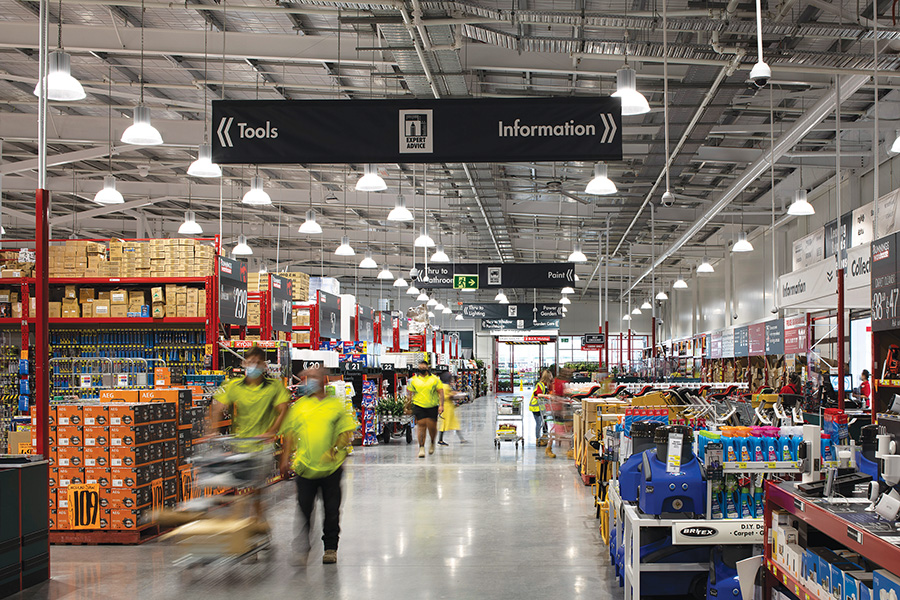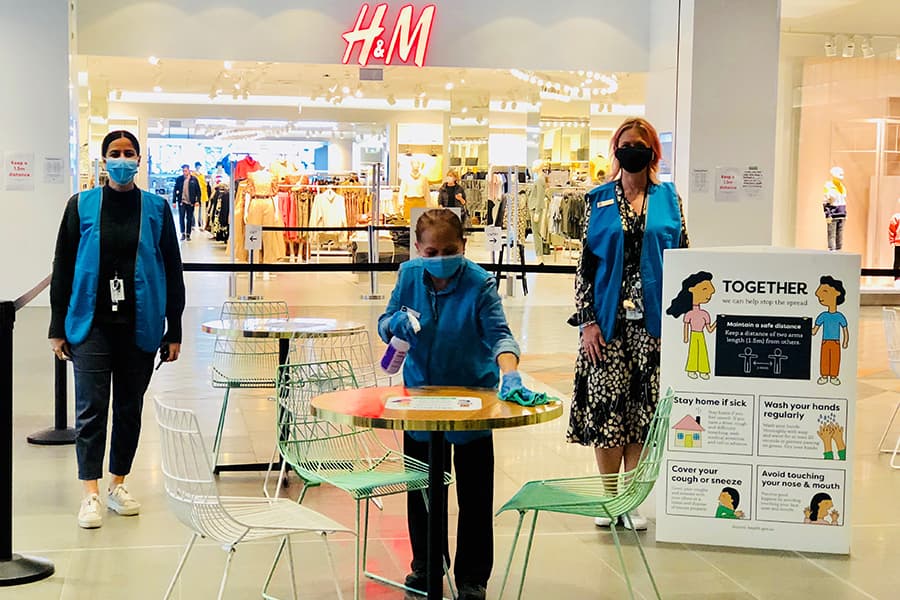Little Guns are always hot! They are the stepping-stones to Big Gun status. What happens in them is always interesting because unlike their Big Gun big brothers, they are more susceptible to minor trends and movements in the retail power plays. In this article, Tony Dimasi looks at some of the factors influencing the success of Little Guns and what makes them vulnerable.
Little Guns sit in the middle of the range of Australian shopping centres. In many regards, they represent the workhorse of the shopping centre industry, and typically most shoppers who frequent Little Guns do so an average of two to three times per week. Their stock in trade is convenience and covering the basics.
Being situated in the middle – not too big and not too small – has often meant that Little Guns, most of which fall within the sub-regional centres classification, are subject to greater pressures than other centre types, potentially caught in a competitive pincer movement between the ever expanding and increasingly glamorous regional centre at the top end, and the ever increasing number of small, nimble neighbourhood centres at the bottom end.
Over the past few years, a few other factors have tended to weigh on their performances and prospects – the unexpected halt to the sales growth momentum of supermarkets, particularly the much reported Woolworths woes, and the even greater difficulties faced by two of the three discount department store operators, Big W and Target.
These factors are of particular importance to most sub-regional centres, because typically around two-thirds of total sales at these centres are accounted for by these two categories, i.e. the supermarket(s) and discount department store(s).
If we look at the evolution of these centres over the past decade, generally change has been slow and steady. There is discernible evidence of a reduction of some 2 to 3% in the relative contribution to centre sales by the discount department store; a corresponding increase of 2 to 3% in the contribution of the supermarket; slightly greater representation of mini-major stores, such as discount pharmacies, the occasional large fresh produce retailer, or perhaps a discount variety store; and a slight increase in both the number of specialty stores and the contribution of the specialty category to total centre sales. Overall however, it has largely been steady as she goes.
If we scratch a little below the surface, the trading performances of these sub-regional centres have often been better than the top line sales figures might suggest. Two of the key retail categories which are so important to them – food and groceries, the mainstay of the supermarket anchor, and apparel, the key element of the discount department store – have both seen significant deflation over recent years. Therefore, while the number of items purchased is often increasing, and the number of shoppers visiting similarly doing so, reported top line sales for these anchor tenants are not.
That is one of the reasons perhaps why reported specialty sales, particularly over the past few years, have generally held up well, with increases of 4 to 5% often achieved.
In addition, those Little Guns lucky enough to have a Kmart anchor have seen particularly strong growth in sales performance from that operator, as opposed to the much more subdued performances of both Target and Big W discount department stores.
Trading performance has certainly not dampened demand for these centres as retail assets.
Savills Research, in its August 2016 review of Australian sub-regional shopping centre sales, shows that the average volume of transactions annually in this class of asset has been running at around $1.9 billion over the past two years, and has averaged $1.6 billion over the past five years. That figure compares with an average of around $500 million annually recorded over the previous seven or eight years – the level of demand for these assets having tripled over recent years.
At the same time, yields have been steadily firming, to the point where they are now almost back to their (record lowest) pre-GFC levels, averaging 6.5 to 7%.
For the future, Australia’s sub-regional centres will need to be a little more proactive, given an increasingly competitive retail environment both at the top end and the bottom. The supermarket anchor is likely to remain a powerhouse performer, but can probably not be relied upon to drive the same increases in sales and traffic as have been enjoyed in the past. The discount department store anchors similarly are unlikely to see a return to the glory days of the 1990s and early 2000s, particularly in view of the rapid deployment of the international fast fashion competitors which generally are locating in the large regional centres, and rarely in the sub-regionals. A number of Little Guns are likely to attract fast fashion anchors, but that number will be small.
The bigger regional centre competitors continue to expand their ranges, particularly in apparel, as well as to invest heavily in greatly improved food & beverage offers, design, presentation and ambience. The big are certainly getting bigger.
However, that factor alone does not preclude proactive Little Guns from continuing to grow.
First, the number of regional centres is limited, and additions to stock are few and far between. Australian population growth, on the other hand, continues at high levels. Second, Australia’s major urban areas – which is where many sub-regional centres are situated – are offering increasing growth and gentrification opportunities through brownfield developments in the established suburbs, rather than just greenfield growth on the outer fringes.
Thus, centres such as Southgate Sylvania, Marrickville Metro, Birkenhead Point and many other Little Guns are able to take advantage of the opportunities offered by this changing landscape.
In a number of other cases, particularly for sub-regional centres located in provincial cities – e.g. Bendigo Marketplace or Stockland Green Hills at East Maitland – that centre is effectively the ‘regional centre’ for the town and the surrounding region. In many respects, it is then able to take on the qualities and characteristics of a regional centre, and to drive growth as a consequence.
For others, particularly the typical sub-regional centre located in the suburbs of state capital cities, more thought will be required around reinvestment to both consolidate the centre’s existing strengths of ease and convenient access to the basics, while adding new elements to maintain interest and relevance. One such element, which appropriately designed and scaled appears to be increasingly relevant to all centre types, is an improved food and beverage offering. It seems that Australian shoppers simply cannot get enough food and beverage in their centres at the moment.




















